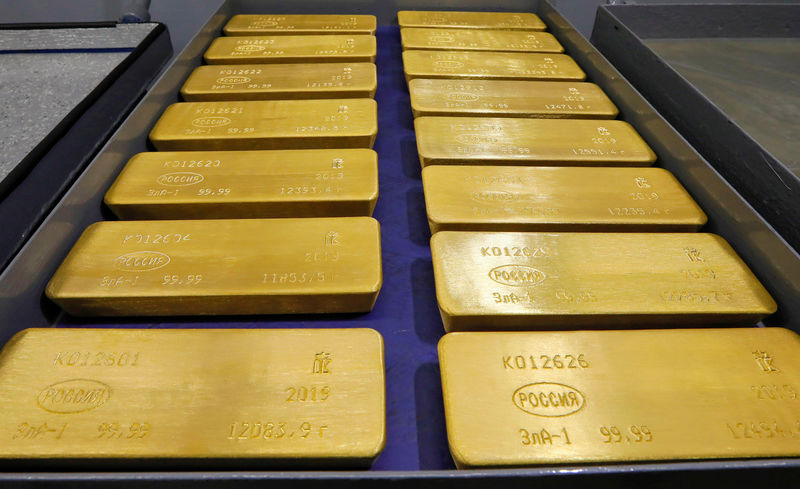By Ambar Warrick
Investing.com — Gold prices rose for a fourth straight session on Friday following more signs that U.S. inflation was easing, while persistent fears of a 2023 recession also underpinned safe haven demand for the yellow metal.
Data on Thursday showed that U.S. inflation grew at a slower pace in March, coming a day after data showed also eased. The readings furthered expectations that inflation was retreating, which could invite a less hawkish Federal Reserve.
The sank to a near one-year low after the data, while Treasury yields also retreated, benefiting gold prices.
Safe haven demand for the yellow metal was also boosted by several warnings on a U.S. recession this year, the prospect of which also spells less hawkish action by the Fed.
rose 0.3% to $2,046.61 an ounce, while rose 0.3% to $2,060.75 an ounce by 22:16 ET (02:16 GMT). Both instruments were set for a fourth straight day of gains, and were also headed for a weekly rise of nearly 2% each.
Gold has been on a tear over the past month, with safe haven flows into the yellow metal being initially sparked by fears of a banking crisis.
While regulatory intervention helped stem concerns over a broader crisis, the collapse of several U.S. banks saw markets pricing in a less hawkish stance from the Fed, as well as a potential recession this year due to economic pressure from high interest rates.
show that markets are pricing in one more rate hike by the Fed in May, followed by a likely pause in June.
The prospect of a less hawkish Fed benefits gold, given that higher interest rates push up the opportunity cost of holding non-yielding assets.
Other precious metals also advanced on Friday and were set for a strong week. rose 0.6% to $1,069.15 an ounce, while rose 0.9% to $26.148 an ounce.
Among industrial metals, copper prices rose sharply, benefiting from a weaker dollar. Sentiment towards the red metal was also aided by optimism over a demand recovery in major importer China.
rose 1% to $4.1680 a pound, and were set to add nearly 4% this week.
While China’s copper imports dropped 19% in March, a broader improvement in the country’s imports spurred bets that commodity demand will also pick up in the coming months.
Read the full article here




